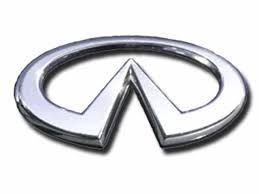FX50 AWD V8-5.0L (VK50VE) (2009)
/Page-443009.png)
a. Release the fuel pressure. Refer to See: Tune-up and Engine Performance Checks/Fuel Pressure/Testing and Inspection.
b. Disconnect ignition coil and injector harness connectors. Refer to See: Powertrain Management/Ignition System/Ignition Coil/Service and
Repair/Exploded View.
3. Remove valve timing control solenoid valve. Refer to See: Timing Components/Timing Chain/Service and Repair/Removal and
Replacement/Exploded View.
4. Crank engine, and then check that engine oil comes out from valve timing control solenoid valve hole (A). End crank after checking.
WARNING:
Be careful not to touch rotating parts (drive belt, idler pulley, and crankshaft pulley, etc.).
CAUTION:
-
Prevent splashing by using a shop cloth to prevent the worker from injury from engine oil and to prevent engine oil contamination.
-
Prevent splashing by using a shop cloth to prevent engine oil from being splashed to engine and vehicle. Especially, be careful not to apply
engine oil to rubber parts of drive belt, engine mounting insulator, etc. Wipe engine oil out immediately if it is splashed.
5. Perform the following inspection if engine oil does not come out from valve timing control solenoid valve oil hole of the valve timing control
cover.
-
Remove oil filter, and then clean it. Refer to See: Timing Components/Timing Chain/Service and Repair/Removal and Replacement/Exploded
View.
-
Clean oil groove between oil strainer and valve timing control solenoid valve. Refer to See: Engine Lubrication/Description and Operation/Engine
Lubrication System and See: Engine Lubrication/Description and Operation/Engine Lubrication System Schematic.
6. Remove components between valve timing control solenoid valve and camshaft sprocket, and then check each oil groove for clogging.
-
Clean oil groove if necessary. Refer to See: Engine Lubrication/Description and Operation/Engine Lubrication System and See: Engine
Lubrication/Description and Operation/Engine Lubrication System Schematic.
7. After inspection, install removed parts in the reverse order.
Inspection for Leakage
The following are procedures for checking fluid leakage, lubricant leakage.
-
Before starting engine, check oil/fluid levels including engine coolant and engine oil. If any are less than the required quantity, fill them to the
specified level. Refer to See: Maintenance.
-
Follow the procedure below to check for fuel leakage.
- Turn ignition switch to the "ON" position (with engine stopped). With fuel pressure applied to fuel piping, check for fuel leakage at connection
points.
- Start engine. With engine speed increased, check again for fuel leakage at connection points.
-
Run engine to check for unusual noise and vibration.
NOTE:
If hydraulic pressure inside chain tensioner drops after removal/installation, slack in guide may generate a pounding noise during and just after the
engine start. However, this does not indicate a malfunction. The noise will stop after hydraulic pressure rises.
-
Warm up engine thoroughly to check that there is no leakage of fuel, or any oil/fluids including engine oil and engine coolant.
-
Bleed air from lines and hoses of applicable lines, such as in cooling system.
-
After cooling down engine, again check oil/fluid levels including engine oil and engine coolant. Refill them to the specified level, if necessary.
